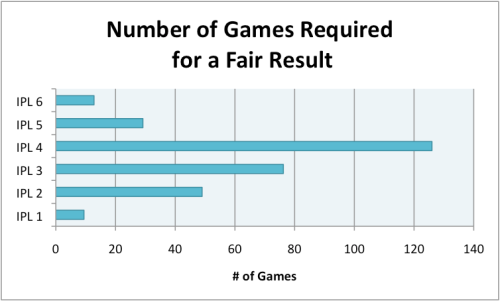
Last year, I predicted the future of cricket in a post titled “Cricket in 2025“. The ICC F&CA position paper makes my speculative fiction not only seem more likely, but also optimistic. Big thanks to Freddie Wilde for inspiring much of what follows.
Product
The position paper, drafted by Giles Clarke of England, Wally Edwards of Australia and N. Srinivasan of India, is about one thing . And one thing alone. Creating the most valuable package possible for the next television rights cycle (2015–2023). Everything else is subservient to this goal.
The consolidation of power, the culling of dead weight, the polishing of brass until it appears to perhaps be gold, are all designed to assure the suits at television stations that ICC cricket is a reliable product. It won’t break, you won’t have to return it, it won’t have faulty parts and it won’t lose its shine for eight years. Then you can come back, and we’ll give you a good deal on another one.
Corporations–and indeed all large systems–have external dependencies, and their products are only ever as good as their worst external partner. Microsoft depends on the hardware ecosystem, so every time your piece-of-crap laptop bluescreens, you’ll be swearing at Windows. The product of televised cricket depends on Bangladesh, so each time they put in a dismal performance at a showcase event, the suits at Murdochcorp say maybe we need to move our money to a more reliable product.
The position paper reduces the external dependencies of cricket as a marketable televised product.
Welfare
The seven boards that (ostensibly) suffer as a result of the position paper have effectively been on welfare for some time now. From the point of view of the big three they are leeches on the game with poor money management skills at best and rampant corruption at worst. They take, and they take, and they take, and what do they give back? How much of the money would dry up if some of them just… ahem… went away?
You can only keep a deadbeat on welfare for so long before you have to cut them loose, right?
And so that’s what the position paper does. It puts the remaining seven teams on life support for eight years, hoping they either pull their weight or go away.
There is a weakness in all social welfare programs. It’s hard for marketworshippers to measure the benefits of social good, and some folks will always take advantage of handouts. One option is to remove or reduce all social welfare programs. The other option is to set a higher standard for receiving welfare (“if you want unemployment checks, you are going to have to attend re-education seminars”). This just filters some leeches, but not all. And still, the market will often refuse to recognize the benefits of social uplift.
In the end, you have to weigh the costs against the benefits. What kind of a world do you want to live in? Would you rather punish all the leeches, but also some of the deserving poor? Or would you let some people be leeches, because as a consequence, you are able to help so many who deserve (and need) it?
The ICC has no power to enforce fiscal discipline in the small-seven, and their incompetence is reducing the (perceived) value of the television contracts. And this is why the position paper is what it is. And this is why the position paper appears now, before the next contract cycle.
Part of the reason it’s catastrophic is that there is no escape clause, no democratic process to modify (or abolish) this power structure, and no accommodation of the fact that financial realities of the game may change. Dramatically. Rapidly. And the big three may no longer be the best, or the only, or the main players. The paper assumes the current financial reality is the final reality for cricket.
Another reason it’s catastrophic is that three men in foreign lands hold the fate of cricket in 100+ countries in their hands. If it makes “TV money” sense to drop tours to New Zealand this year– Giles, Wally and Srini have a teleconference, and boom, New Zealand is off the calendar. No appeal, no recourse, cricket dies in New Zealand. And so it goes.
And we haven’t even gotten to Papua New Guinea, or Nepal, or one hundred other teams who have suffered this fate in relative silence long before the position paper existed.
There is a sound reason for why the big-three would want to do this. But if we let the rich distribute wealth based on who they found worthy, we’d live in a very different world.
Or maybe that is the world we live in today.
End Game
But this document is not the end game. It is the opening gambit. We have now seen some of their cards, but by no means all of them.
This document is meant to serve a near-term deadline. If you are imagining the future of cricket based solely on the contents of this paper (Anand Vasu, “it’s not the end of the world“. No shit, sherlock.) you’ve only seen as far as the end of your nose.
In the short-term, the big-three make four main demands:
-
We want to manage the money.
-
We want veto powers.
-
We want a larger share of the money.
-
We want to scrap the FTP.
Everything else is collateral damage, including the relegation system.
I think the BCCI would happily walk away with a win on 3 and 4, dropping their demand of a veto. For now.
This document is a negotiating tactic, and it does not predict the future, but it does tell us the themes of their future. And the themes are thus:
- Defeat: Cricket will never meaningfully grow beyond the countries that currently play it.
- Resignation: The only growth that can happen is in the value of the product, not in the size of the market.
- Hubris: The cricket world is composed of makers and takers. To increase the value of the product, we need to lose the takers.
- Fear: Left to 10 bumbling boards, the money will diminish over time.
We don’t know the end game. In the past we only had hints. The position paper our first big clue.
(Image credit: Stephen Coles)





